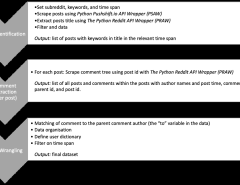Authors: Emmanouil Vourliotis, Philip Chang, Peter Elmer, Yanxi Gu, Jonathan Guiang, Vyacheslav Krutelyov, Balaji Venkat Sathia Narayanan, Gavin Niendorf, Michael Reid, Mayra Silva, Andres Rios Tascon, Matevž Tadel, Peter Wittich, Avraham Yagil
Published on: July 25, 2024
Impact Score: 6.8
Arxiv code: Arxiv:2407.18231
Summary
- What is new: The introduction of Line Segment Tracking (LST), a novel algorithm parallelizable and hardware agnostic for particle reconstruction.
- Why this is important: Current particle reconstruction algorithms for the upcoming High Luminosity LHC (HL-LHC) demand computational resources that may exceed availability.
- What the research proposes: Developing and implementing the LST algorithm using the Alpaka library to enhance efficiency and performance in parallel processing environments including CPUs and GPUs.
- Results: LST demonstrated improved physics and timing performances compared to existing pattern recognition algorithms when tested within the CMS HL-LHC High Level Trigger (HLT) framework.
Technical Details
Technological frameworks used: Alpaka library
Models used: Line Segment Tracking (LST) algorithm
Data used: Data from CMS HL-LHC High Level Trigger (HLT)
Potential Impact
High-performance computing centers and companies involved in the development of computational tools for particle physics research could benefit from this novel algorithm.
Want to implement this idea in a business?
We have generated a startup concept here: ParticleRecon Tech.



Leave a Reply